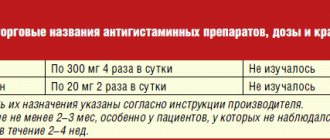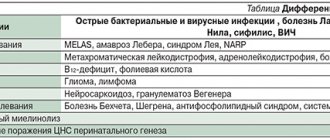Azithromycin
Azithromycin is one of the most commonly used broad-spectrum antibiotics today. It exhibits a bacteriostatic effect by binding to the 50S ribosomal subunit of bacteria and inhibiting the action of the peptide translocase enzyme at the key stage of protein synthesis - translation, which, for obvious reasons, does not have the most favorable effect on the processes of growth and reproduction of microorganisms. At high concentrations, the drug can be not only a development inhibitor, but also a killer, having a bactericidal effect. The effectiveness of any antibiotic is determined by the number of bacterial strains sensitive to it. Azithromycin looks very presentable against this background. Its optical sight captures both gram-positive and gram-negative specimens: Staphylococcus epidermidis, Staphylococcus aureus, Streptococcus pyogenes, Streptococcus pneumoniae, Streptococcus agalactiae, Streptococcus viridans, Haemophilus influenzae, Gardnerella vaginalis, Moraxella catarrhalis, Neisseria gonorrhoeae, Bordetella pertussis, Legionella pneumophila, Campylobacter jejuni, Bordetella parapertussis, as well as anaerobic bacteria Bacteroides bivius, Peptococcus, Clostridium perfringens, Peptostreptococcus spp., chlamydia (Chlamydia pneumoniae, Chlamydia trachomatis) and their closest “companions”, breaking records in the frequency of detection of ureaplasma (Ureaplasma urealyticum) by venereologists, mi coplasma ( Mycoplasma pneumoniae) and mycobacteria (Mycobacteria avium complex), spirochetes (Borrelia burgdorferi, Treponema pallidum).
Speaking about the “technical and tactical” characteristics of azithromycin, what is striking is the ease of its passage through histohematic barriers, due to which it quite quickly enters organs and tissues, as well as cell membranes (in this regard, it is effective against infections potentiated by intracellular pathogens such as chlamydia ). A stable level of the drug in the blood plasma is achieved 5-7 days after the start of antibacterial therapy. High concentrations of azithromycin, which can have a therapeutic effect, remain in the body for another 5-7 days after discontinuation of the drug.
The drug under the name azithromycin can be found in Russian pharmacies in two dosage forms: domestic tablets and domestic capsules. The drug should be taken, like almost any oral antibiotic, with reference to a meal: either 1 hour before or 2 hours after it. The frequency of administration is 1 time per day. The single and daily dose, as well as the duration of taking the drug, are determined by the specific disease and its severity.
Playing blind
Most outpatient doctors immediately prescribe medications without properly examining the patient. The worst thing is that the doctor, in the absence of information, cannot adequately formulate his own indications for hospitalization.
“It often happens that people come to the hospital, literally breaking all the laws, doing tests on their own in a commercial laboratory, deceiving their doctor, deceiving the laboratory, saying that he is not sick with Covid, and self-propelled - on foot, in personal transport, in a taxi - arrives to the hospital in serious or moderate condition.”
What additional examination is needed?
When infected with coronavirus, it is necessary to constantly monitor saturation indicators, which are measured with a pulse oximeter. This device looks like a clothespin that is attached to your finger. It shows how saturated the blood is with oxygen, i.e. saturation. It is measured as a percentage, and the norm for a healthy person without diseases of the lungs and cardiovascular system is 98−99%.
During coronavirus infection, saturation should be measured at least 4 times a day and for at least 30 seconds.
Photo: Vladimir Gerdo/TASS
Additional examination, which should be prescribed by the attending physician, may include a chest examination on a computed tomography (CT) scanner, a complete blood count, a blood test for c-reactive protein* and d-dimer*.
Based on these indicators, it is possible to timely determine the criteria for hospitalization, even if saturation indicators do not deviate greatly from the norm.
Example: a 49-year-old woman had a temperature above 38.5 for five days, a terrible cough, and shortness of breath. At the same time, saturation did not fall below 95%. She took tests, and the value for c-reactive protein was 126. The norm for this indicator is up to 5. Such a pronounced increase can be considered the start of a cytokine storm*, which is considered a complication of coronavirus infection. The woman called an ambulance, the doctor listened to her and did not hear anything in the lungs, which happens very often with covid pneumonia. The doctor told her that the blood tests meant nothing at all and left. She, breaking quarantine, came to the hospital through an acquaintance, where she underwent a CT scan, which showed that 65% of her lungs were affected. This corresponds to the third degree of lung damage out of four.
*Cytokine storm is an excessive immune response of the body to an infection that affects organs without the participation of a pathogen.
*C-reactive protein (CRP) is a highly sensitive indicator of inflammation and infection and responds to significant tissue damage.
*D-dimer - intensity and nature of thrombus formation processes.
A significant increase in c-reactive protein begins with a reading above 50.
In the photo: a patient undergoing examination on a computed tomography machine (Photo: Sergey Savostyanov/TASS)
Disservice
Azithromycin itself did not initially work and was simply a conduit for hydroxychloroquine. Even without reference to the coronavirus, Russian people are accustomed to treating any infection with antibiotics. And, what is absurd, outpatient doctors continue to use the azithromycin monotherapy regimen in the treatment of coronavirus infection.
Pneumonia caused by different causes (viruses or bacteria) affects the lung tissue in different ways, and for this reason, treatment tactics will differ.
There are 4 lines of antibacterial drugs on the World Health Organization (WHO) list that should be used in certain situations. The notorious azithromycin is included in the second line and is used for specific indications.
In addition, there is a list of antibiotics that are not recommended for use in certain combinations, because they have very pronounced side effects.
Now the most common combination of coronavirus treatment at the prehospital stage is a combination of azithromycin and levofloxacin. This particular combination is not recommended by WHO. It is prohibited by clinical pharmacologists, including in Russia.
Photo: Anton Vergun/TASS
Therapy of despair
The new virus has misled the entire global medical community, researchers and experts. What can we say about the paramedics and doctors who come to our home when called. Patients with Covid are prescribed azithromycin, arbidol, hydroxychloroquine, and other useless, unnecessary or dangerous drugs.
Indeed, it happens that doctors do not know what to prescribe, and they prescribe at least something for the sake of prescribing, to reassure the patient and give him hope that he will recover. Do not forget that they follow the guidelines approved by the Ministry of Health, the schemes of which are used only in Russia.
Photo: Alexander Demyanchuk/TASS
“I started to get the impression that outpatient doctors weren’t just doing this to prescribe. They want to reassure not only the patient, but also to overcome their fear of this infection and their fear of complications that may arise suddenly. It feels like they are trying to use everything, but as a therapy for despair. Thus, they delay the moment of what they believe are complications, and they also gain time for themselves, giving themselves the opportunity to reduce their vigilance towards this patient. So the doctor shifts responsibility to those who created these clinical recommendations.”
There are also those who have not read clinical studies or studied the opinions of the world medical community. Prescriptions by such doctors occur out of ignorance.
Composition and release form
Capsules - 1 capsule:
- active substance: azithromycin dihydrate - 262.03 mg, equivalent to azithromycin - 250.00 mg;
- excipients: lactose - 132.3 mg, corn starch - 33.0 mg, sodium lauryl sulfate - 2.0 mg, magnesium stearate - 8.0 mg;
- hard gelatin capsules No. 0, body and cap: quinoline yellow dye, sunset yellow dye, titanium dioxide, gelatin, purified water, sodium lauryl sulfate, propyl parahydroxybenzoate (propylparaben), methyl parahydroxybenzoate (methylparaben);
- black ink: (shellac, anhydrous ethanol, isopropanol, isobutanol, propylene glycol, ammonium sulfate concentrated solution, black iron oxide dye, sodium hydroxide, purified water).
Capsules 250 mg.
6 capsules in an aluminum/PVC blister, 1 blister along with instructions for use in a cardboard box.
Coronavirus therapy now [RECOMMENDATIONS] First aid kit for Covid
These recommendations from our expert should only be used after consultation with your doctor.
- If possible, buy a pulse oximeter and monitor your saturation readings.
- Of the medications, first of all, it is necessary to have any antipyretics. The WHO warning that some antipyretics worsen the course of the new coronavirus infection has now been completely debunked. This warning was withdrawn back in March.
- You can also use any usual painkillers (in the absence of individual contraindications).
- For those taking birth control pills or who have a tendency to clot, it is necessary to have anticoagulants. These are drugs that thin the blood and prevent the formation of blood clots.
- When taking anticoagulants and antipyretics, you need to remember to protect the stomach (omeprazole, famotidine, etc.) to avoid gastrointestinal bleeding.
- If you have a new coronavirus infection, you should drink more fluids to prevent dehydration and kidney problems.
Do not forget that the doctor must explain to the patient what he is prescribing and why.
*Based on materials from Oksana Stanevich’s broadcast for the “Not in vain” foundation and personal consultation for the “SP” publication.
The deficit we create ourselves
Since spring, people in panic began to buy everything they thought they needed. At first it was buckwheat and toilet paper, then lemons, garlic and ginger, then medical masks, and gradually the turn came to basic mercury thermometers and medicines.
Those who have encountered coronavirus infection more closely may know about the drug dexamethasone, its analogue is prednisolone. Now it is almost impossible to find dexamethasone in pharmacies. There have been rumors that it can supposedly cure cytokine storm, is effective in preventing coronavirus, or can stop the more complex, fatal course of covid.
In the photo: oxygen concentrator (Photo: Sergey Malgavko/TASS)
“Back in the summer, a study was conducted in the UK, which showed that the administration of dexamethasone actually improved the outcome of the disease and made it possible not to develop more severe respiratory failure. However, there was one “but”, which for some reason is again not taken into account anywhere. The benefit of dexamethasone has been shown only in combination with oxygen support (prescribed when saturation decreases below 95%). In the absence of oxygen support, outcomes did not improve and there was even a trend towards worse outcomes.”
In outpatient treatment, dexamethasone cannot help. And if you decide to buy it “just in case,” then do not forget to buy an oxygen concentrator, the cost of which varies around 60-70 thousand rubles.
Time for antibiotics: when needed
In the early stages - up to the 8th-9th day - there can be no talk of antibiotics at all. During this period, coronavirus pneumonia develops, which cannot be stopped by prescribing antibiotics.
Some may develop secondary bacterial pneumonia. This occurs more often in people with an initially suppressed immune status. For example, with decompensated diabetes mellitus.
“When there is a lot of glucose in the blood, bacterial microflora has a greater chance of superimposing viral pneumonia and stimulating the proliferation of bacteria in the lungs. It has certain laboratory signs. We cannot prescribe antibiotics for diabetes and Covid for prevention. Because it won’t work for prevention, antibiotics don’t prevent secondary bacterial pneumonia, they only treat it.”
To prevent the development of bacterial pneumonia, it is necessary to reduce glucose levels with the help of glucose-lowering drugs or insulin under the supervision of a doctor.
Photo: Vladimir Gerdo/TASS





